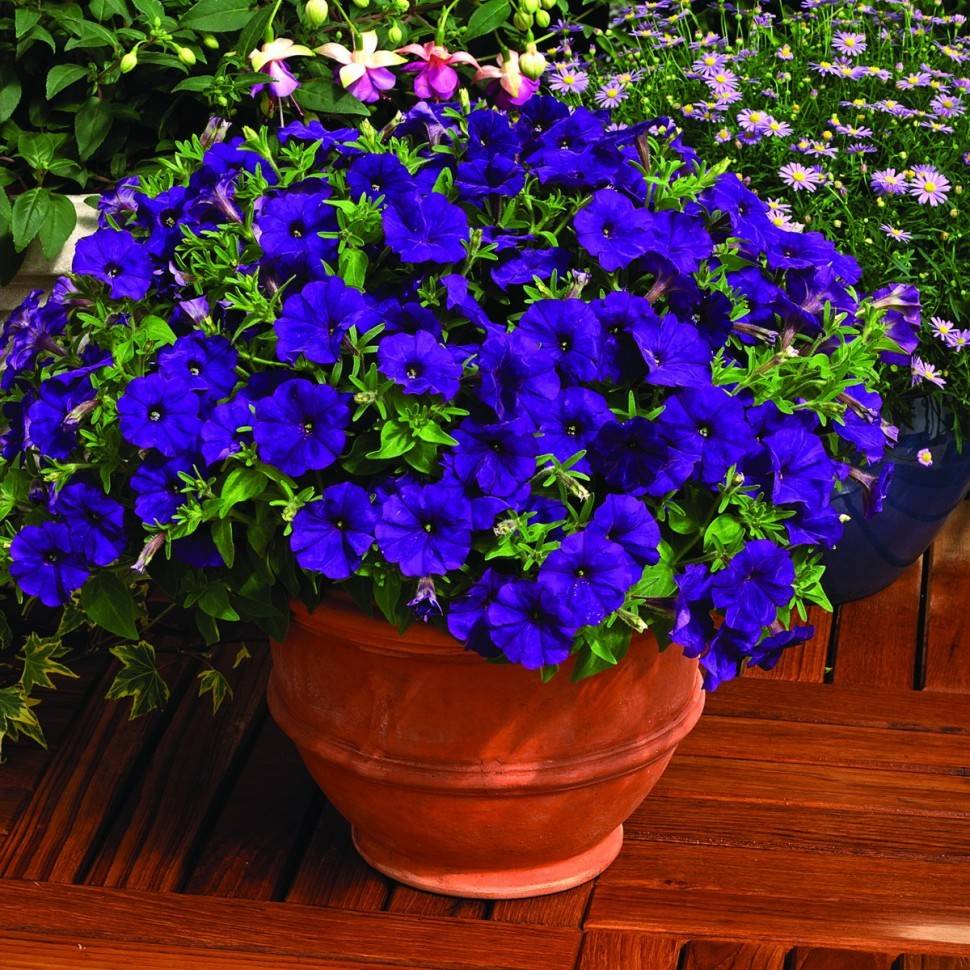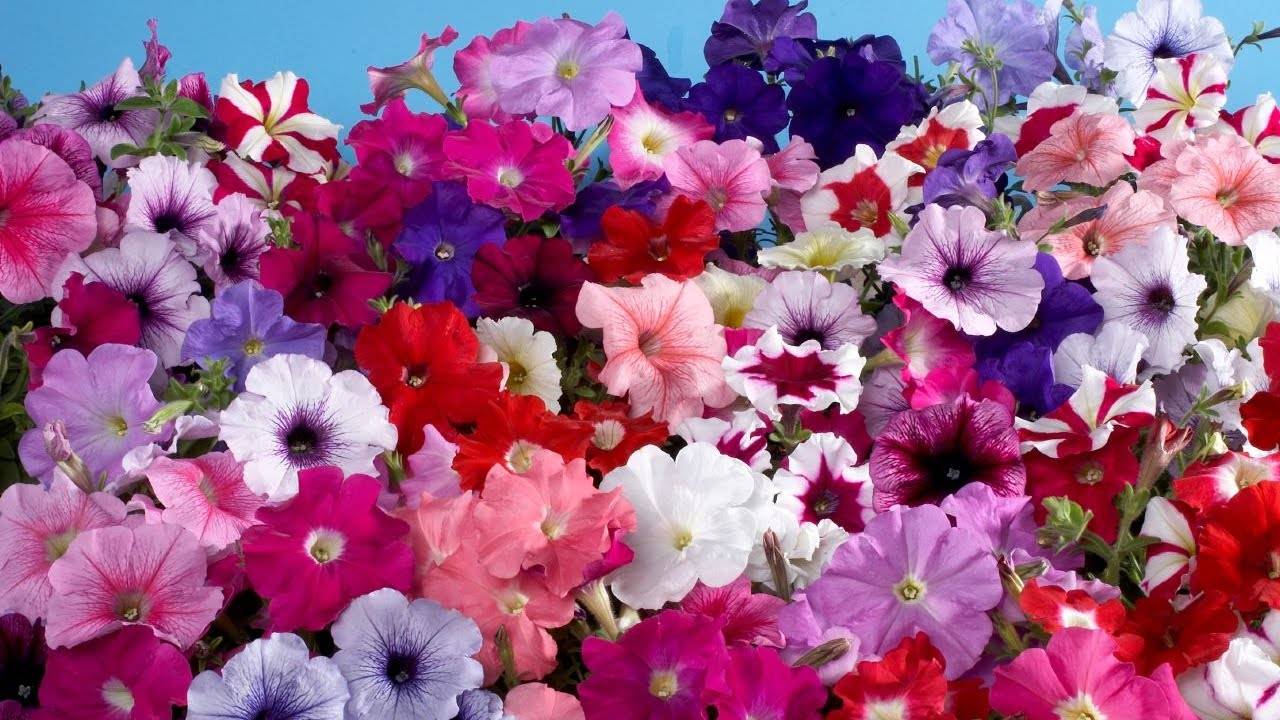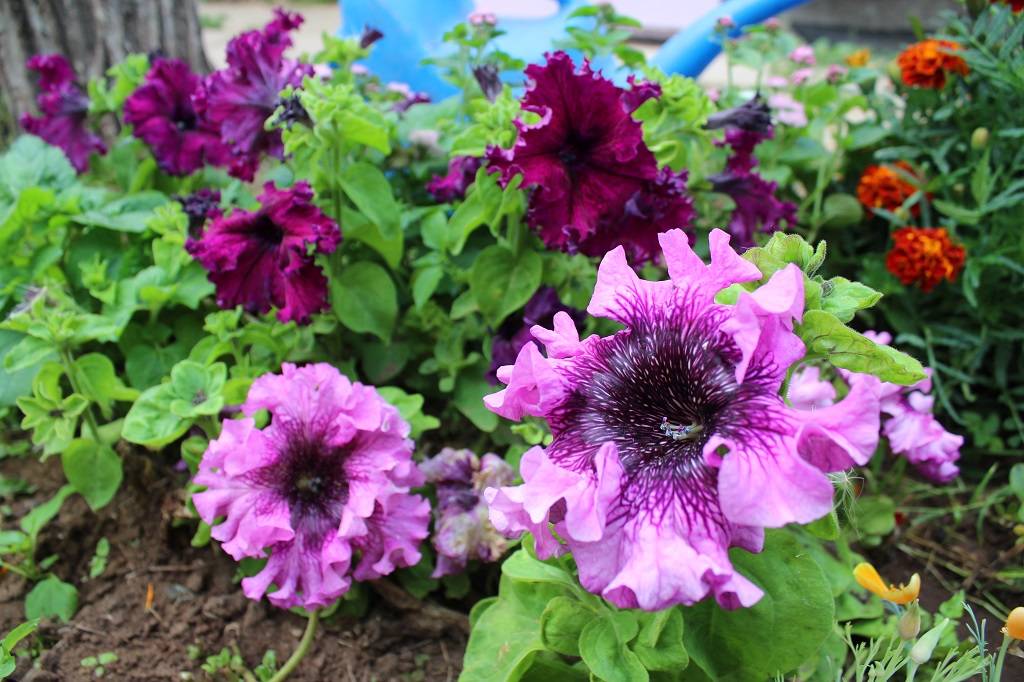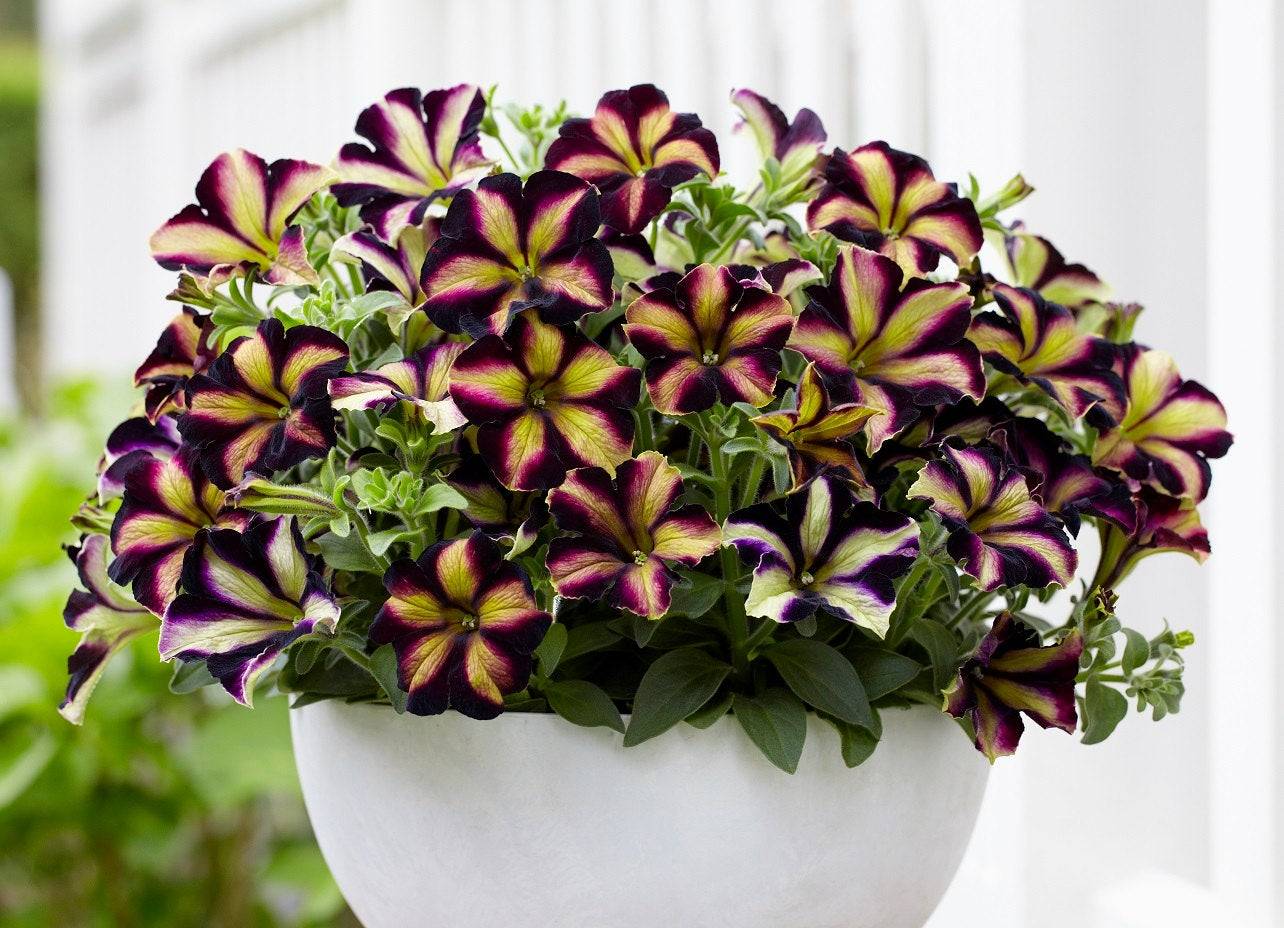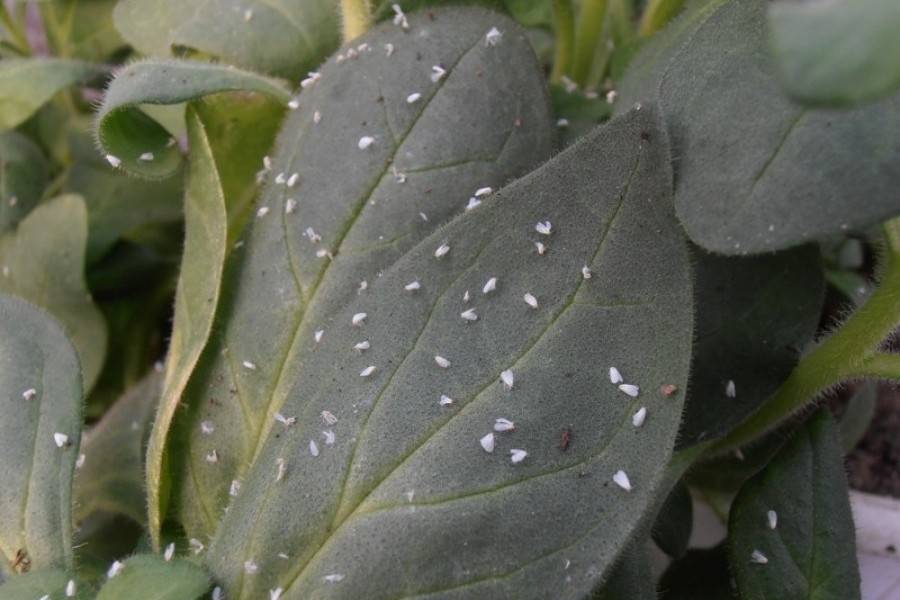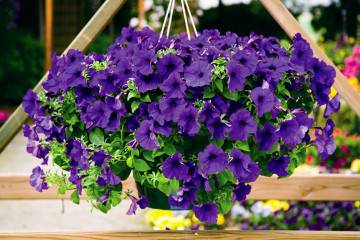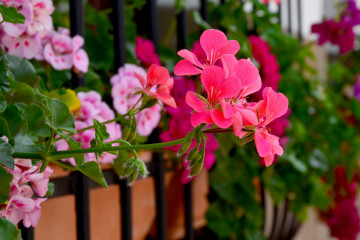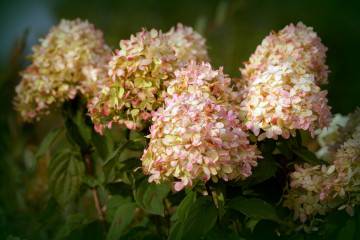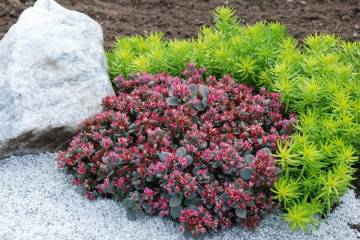Bush petunia - the best varieties for open ground
Content:
Bush petunia is the most successful plant for decorating a garden. This culture has several types. To create compositions, you can use cascading, ampelous varieties. Due to the lush crown, the erect ones also look beautiful. The bush is covered with a cap of buds from the beginning of summer until the very snow. It is also important that petunia grows well in limited containers. This means that a pot with a bush can be brought home and admired the flowering even in winter.
What does bush petunia look like?
Bush petunia looks very elegant. Usually the bushes are lush, the foliage is dense. The culture enters flowering within 2-2.5 months after sowing the seeds. Abundant flowering continues until frost.
What family does it belong to
Herbaceous or semi-shrub varieties of petunias belong to the Solanaceae family. The height of the bushes varies from 10 cm to 1 m. The culture comes from the tropics. In total, the studied species are about 40.
Briefly about the history of appearance
The first descriptions of the culture date back to the 18th century. Petunias are native to the tropics of Brazil and South America. It also grows in Paraguay, Argentina, Uruguay, and as a perennial. All wild and cultivated varieties have colorful blooms and remain decorative for a long time. Bush varieties of petunias are especially widespread. The diameter of the bud of this species reaches 15 cm.
Wild petunias are perennials. Hybrid varieties, which appeared 100 years ago, began to be grown as indoor plants. Regardless of the climatic conditions, they began to be bred as annuals in gardens and in house plots.
Plant characteristics
The characteristics of petunias have predetermined their role as the most sought-after flowers by gardeners. The main thing is to plant the plant correctly. Varieties of petunias tolerate heat and prolonged rains equally well. They are not afraid of short-term cold snaps.
Of the huge number of species and varieties, it is the bushy species of petunias that have become the most common. Their most important advantage is their amazing beauty during flowering. Also important are the ease of care, the abundance of varieties.
Description of bush petunia:
- superficial root system with shallow taproot and lateral roots;
- green rounded shoots;
- the crown is vertically directed;
- the entire aerial part of the plant is covered with pile;
- all varieties have large, at least 10 cm in diameter, buds;
- the buds are funnel-shaped and bloom from the leaf sinuses;
- the pedicel is short or long;
- the transitions of shades of petals are unsharp, smooth;
- the contours of the buds can be smooth, wavy, corrugated, lancet;
- color variety from white to black, including all shades of the colors of the rainbow;
- the presence of varieties with patterned petals, edges, stripes, specks, etc.;
- petunia leaves are rounded dark green (there are also light green).
Classification of popular types of spray petunias
Petunias can be classified by:
- the appearance of the plant;
- the size of the bush;
- the diameter of the bud;
- color of petals (monochromatic, spotted, striped, etc.);
- flower structure (single row, double);
- the structure of the bush (ground cover, bush, cascade).
It also takes into account this plant's perennial or annual.
Petunia varieties that are most popular with gardeners
No crop can match the variety of petunias. Therefore, she is rightfully the favorite of many gardeners. Among this abundance, everyone will find a flower to their liking. But there are still favorites among the varieties. The most beautiful varieties of petunias are described below.
Daddy
Despite its compactness, the variety is distinguished by its large flowers. Small petunia tolerates wind, rain and lack of light well. The color of the petals is shades of red, white, blue.
Pikoti
Petunia Pikoti is a short bush, only 25 cm. The flowers are large in different colors, which are characterized by a light edging along the edge of the petal. Lush flowering, long-lasting. This variety adapts well to different climatic changes.
Storm
The variety resists wind and rain well. Ideal for outdoor cultivation, however, picky about the composition of the soil. Does not lend itself to gray mold. The bush 35 cm high blooms with large buds of various colors. All shades of red, blue, white are found. Petunia blue is especially good.
Polaris
This annual is a derivative of the Aelita variety. Early flowering, long and abundant. The buds come in a variety of colors. Particularly interesting are the two-tone ones. The main field of the petal is dark pink, and in its center is a vertical lanceolate stripe. In general, the pattern is star-shaped.
Polaris tolerates weather surprises well.
The height of the bush is about 30 cm.The variety grows equally well in:
- a garden without shelter;
- hanging pots;
- baskets;
- stationary flowerpots;
- balcony boxes.
Dreamms
The hybrid blooms in large buds (10-13 cm). Rich tillering, abundant flowering. The height of the bush is no more than 40 cm. The red buds exude a magical aroma. Suitable for all types of landscaping. You can plant along the paths, create flower arrangements in flower beds, flowerpots. Suitable neighbors:
- verbena;
- marigold;
- lobelia;
- geranium.
Fantasy
Fantasy is a multi-flowered variety. The peculiarity of the variety is the wavy edges of the petals. The decorative effect of the bush lasts a long time. The variety has a short time from sowing to flowering. Perfect for decorating flower gardens, terraces and balconies.
Hit parade
Hit Parade grows up to 20-25 cm tall. The leaves and flowers are medium-sized. Shades of petals from ash pink to violet blue. The size of the bud does not exceed 10 cm in diameter. The use is universal.
Titanium
The Titan bush is highly branched and vertically oriented.This petunia is short, the height does not exceed 25 cm. The crown diameter is about half a meter. Emerald foliage, elliptical leaf plate.
Triumph
Large-flowered variety. The diameter of the bulky buds reaches 16 cm. The petals are corrugated striped. The middle of the flower is dark. The main background is all shades of pink. Triumph does not tolerate cutting rains.
Limbo
Bush up to 20 cm high. Buds about 11-12 cm in diameter. Abundant flowering. The variety is resistant to changes in weather conditions. The colors of the buds are pearl pink, lilac, cream, gray-lilac.
Rare varieties
Of the rare varieties, flower growers distinguish the Crazytunia Black Mamba petunia. Its large buds are almost black in color.
Hybrids such as Deep Pink and Dark Violet are peculiar. These are spotted petunias, and the patterns and number of spots on the petals of the buds change depending on the weather.
Exquisite mesh patterns adorn the buds of the Daddy Blue F1.
The variety Amore - Fiesta attracts attention. A pattern of yellow and burgundy stripes creates a pattern that unites five hearts on five petals.
The Pulse variety from the Crazytunia series is distinguished by a combination of deep lilac, yellow and bright burgundy colors.
Phantom petunia is very beautiful. A golden star is clearly visible against the velvet black background of the rosette.
Another rare petunia is Red & White Delight F1. The bush is compact, its height is no more than 25 cm. Large double buds are painted in two colors - white and red.
Features of care in the garden
What kind of petunia is, you can find out only after the first bud opens. And only with good care.
First of all, you need regular watering. Although it is considered a drought tolerant plant, it should be watered at least twice a week. To avoid leaf burns, watering procedures are best done in the evening.
Fertilization should also be regular. A couple of days after planting, nitrogen fertilization is needed. They will help build green mass. Then, every 2 weeks, mineral supplements with a high content of phosphates and potassium should be added.
For good tillering, the stems need to be pinched. During the summer, 2-3 full procedures are required.
When and how it blooms
In Central Russia, petunia can be planted outdoors in May after the establishment of stable warm weather.
Types of flowers
The buds come in a variety of shades. Along with monophonic, there are many two-tone and more colors. There are single-row buds, there are also double ones. Breeders are breeding more and more new varieties.
Flower shapes
The bud is symmetrical and consists of 5 petals. Each petal has a sharp end. The petals themselves are smooth and wavy.
Flowering period
Usually, seedlings are already with buds. They begin to bloom in early summer. The growing season ends only with the onset of frost.
Changes in care during flowering
During the flowering period, there are no special differences in care. In addition to watering and fertilizing, you need to monitor the timely removal of faded buds.
Possible growing problems
For optimal development of petunias, good lighting and temperature must be provided. You should also exclude possible diseases, protect from pests.
Pests
The most common garden pests are dangerous for bush petunias. Especially annoying:
- whitefly, or rather its larvae. They feed on cell sap. The plant turns yellow, dries and dies. Confidor, aktara, actellik are suitable for combating them from chemical preparations;
- aphid.Hordes of insects populate all aboveground parts of the culture and extract juices from them. If you do not take action, the plant dies within 3-4 days. Preparations such as aktara, decis and the like will help to remove the pest;
- spider mites. Especially dangerous for home bushes. The mite quickly entangles the aerial parts of the plant with cobwebs. A colony of pests can in a short time deprive the juicy parts of the petunia of vitality and destroy the flower. Demitan, Apollo, Neoron are usually used against the tick. Small colonies can be removed with tobacco infusion. For infusion, you can use makhorka or any other tobacco. 50 g is enough for a bucket of water. You need to insist for at least a day. Repeat the treatment after each rain. Usually 3-4 treatments are enough per month. In the future, such a remedy can be used for preventive purposes. In addition, the infusion copes well with aphids and whiteflies.
Diseases
Not alien to bush petunias and diseases. The most common are:
- blackleg. With this disease, a section of the stem at the root rots. Not receiving nutrition from the roots, the plant dies. The causative agents of the disease are fungi. The disease is not amenable to treatment. The affected bush should be disposed of. To prevent further spread of the disease, the soil must be treated with a fungus agent. The simplest of these is manganese, a soap solution. It is even better not to plant petunia on the affected area for a couple of seasons;
- brown spot. The appearance of the disease is caused by excessive air humidity. In such an environment, fungi easily multiply. For treatment, copper-based products are suitable, for example, a solution of copper sulfate. For a complete cure, 2-3 treatments are required with an interval of 7-10 days;
- powdery mildew. It is also caused by fungi. Humidity and cool weather lead to their spread. You can fight the disease with topaz, foundation.
Signs of improper care
Gardeners often observe the loss of decorativeness of the petunia bush. This usually occurs with beginners in breeding this crop. If the lashes stretch out, the flowers become smaller and the flowering is scarce, then mistakes were made in the care.
Anxiety should be caused by a sharp yellowing of the leaves. This can lead to:
- sudden changes in temperature;
- violation of the irrigation regime;
- invasion of pests;
- chlorosis.
The latter is a consequence of watering with hard chlorinated water. Due to an excess of calcium and a lack of iron, the process of photosynthesis is disrupted. The leaves lack chlorophyll.
Use in landscape design
Bush petunia is suitable for bringing to life the most creative solutions of the designer. Flowerbeds can be planned even purely from them, playing with the colors of the buds, the size of the bush, the shapes of the plant. You can plant petunias on an alpine slide, you can mix planting bush and climbing petunias. Vases with flowering bushes can be displayed in resting places, hanging pots can be used to decorate summer cottages.
For any gardener, petunia is a real gift. With simple care, it is able to delight with lush flowering until the very frost.
